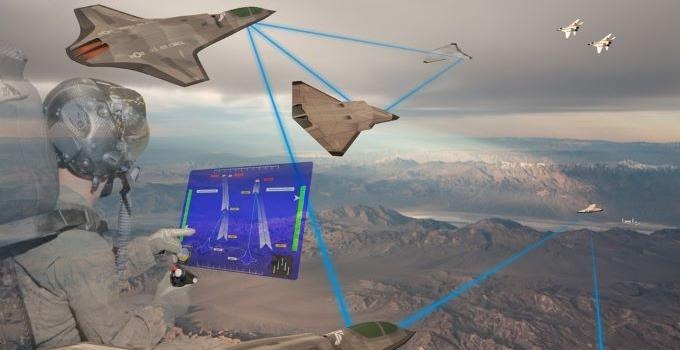
In his article, Hans Liwång uses examples from artificial intelligence (AI) and air defence capabilities to illustrate the challenges and solutions studied. "We can agree that AI can have many roles for aircraft, air surveillance and air defence. It is much more difficult to form an idea of what these roles look like more specifically, under what conditions we should develop such technology and what, if any, specific considerations Sweden needs make", he says. IMAGE: "Loyal wingman image", Airman Magazine, Creative Commons BY NC SA.
The importance of collaboration for defence development
How can policy makers, industry and academia collaborate to promote technology development in defence and security? Hans Liwång explores this in a study published in the journal Technology in Society.
"Currently, there are not enough venues where policymakers and decision-makers can meet those who are involved in technology development. In practice, their worlds are quite separated and they work in completely different ways, which leads to problems when it comes to technology development in the defence and security sector", says Hans Liwång, Senior Lecturer and Associate Professor of Defence Systems at the Swedish Defence University.
In his article "Defence development: The role of co-creation in filling the gap between policy-makers and technology development", recently published in the scientific journal Technology in Society, Liwång examines the role of collaborative research in defence development and outlines the gap between policy-makers and industry. The study also analyses the role that collaborative research could play in bridging this gap.
"The universities have an opportunity to function as an arena for deeper collaborative research that can lead to new results created through a collaborative approach", says Hans Liwång.
In his analysis, he uses examples from artificial intelligence (AI) and air defence capabilities to illustrate the challenges and solutions discussed in the study.
He emphasizes that it is particularly important in the field of defence and security to include the government's perspective on what issues are relevant and how it sees the future.
"Since we are talking about technology development for the defence and security sector, it is important to consider how we see Sweden's future development and what issues we need to resolve. The engineers working on the actual technology development may not have the answers to those questions. It is also possible that the various domains have slightly different perceptions and interpretations of the challenges we face. We, therefore, need to meet and discuss these issues from a long-term perspective."
Liwång goes on to highlights that the traditional separation of civilian and military development work is no longer relevant.
"The technology we are talking about sees no such boundaries. When it comes to AI, the topic of my article, it is a technology that can be used in many areas. Therefore, we cannot continue to use our ‘old’ approach; instead, we must look at it from a more long-term perspective."
Useful collaboration
The study analyses the interaction between policymakers, industry and academia using concepts such as relevance, rigour and design development to assess the benefits of collaboration.
"I draw on design science to identify the impacts that collaboration could have to ensure that the solutions proposed are sustainable and meet the needs of our future society."
In order for collaboration to be effective, we must take a pragmatic approach, be open to new perspectives, apply a multidisciplinary approach, and ensure that the institutions involved in the collaboration can keep their autonomy.
"It is not immediately clear in which domain the solutions to society's problems can be found. It is possible that we need to change society's expectations on technology, or it may be that we need to change the technology as such, or how we apply it. There are different stakeholders working on these issues, and to find the solutions we need to communicate across domains to have a joint dialogue."
Liwång hopes the study will inspire universities, industry, and policymakers to incorporate collaborative research and consider how it can be useful for their specific needs.
"Hopefully, the study can provide new perspectives and inspire organisations to go deeper into research collaboration", he says.
Josefin Svensson
Publication
Hans Liwång (2022): Defense development: The role of co-creation in filling the gap between policy-makers and technology development, Technology in Society 68, 1-10.
Page information
- Published:
- 2022-02-18
- Last updated:
- 2024-02-22
